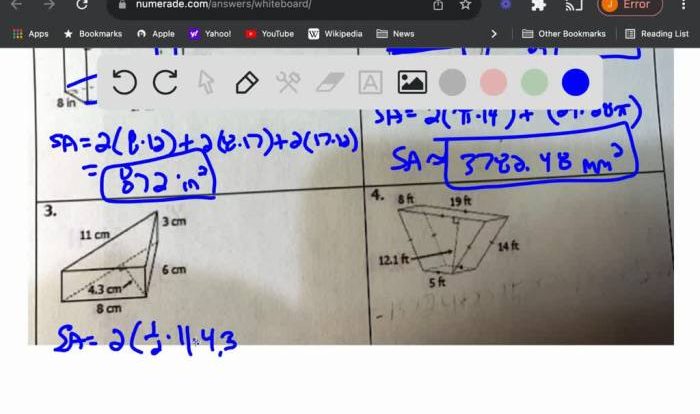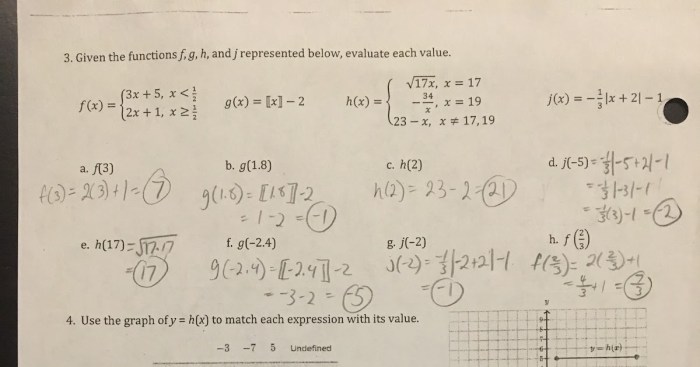Delve into the realm of geometry with the comprehensive Holt McDougal Geometry Textbook PDF, a trusted resource for students and educators alike. This meticulously crafted textbook empowers learners to grasp intricate geometric principles, fostering a deep understanding of spatial relationships and shapes.
Organized into chapters and sections, the textbook systematically introduces key concepts, from basic postulates to advanced theorems. Each chapter is enriched with engaging examples and exercises, solidifying comprehension and preparing students for assessments.
Holt McDougal Geometry Textbook Overview
The Holt McDougal Geometry textbook is a comprehensive resource designed for high school students in the United States. It is part of the Holt McDougal Mathematics series, which has been widely used in American schools for over a century.
The textbook was first published in 1999 and has since undergone several revisions to keep pace with changing educational standards and advancements in mathematics education. The current edition, published in 2012, is aligned with the Common Core State Standards for Mathematics.
Main Objectives and Goals
The primary objective of the Holt McDougal Geometry textbook is to provide students with a solid foundation in the principles and applications of geometry. The textbook covers a wide range of topics, including:
- Plane geometry
- Solid geometry
- Coordinate geometry
- Trigonometry
The textbook also includes numerous practice exercises, review questions, and assessment tools to help students master the concepts presented in the text.
Content and Structure of the Textbook: Holt Mcdougal Geometry Textbook Pdf
The Holt McDougal Geometry textbook is organized into 10 chapters, each covering a specific area of geometry. The chapters are further divided into sections, which introduce key concepts and provide examples and exercises.
The textbook follows a logical progression, starting with the basics of geometry in Chapter 1 and gradually introducing more advanced topics in subsequent chapters. Each chapter builds on the concepts learned in previous chapters, allowing students to develop a comprehensive understanding of geometry.
Chapter Organization
- Chapter 1: Basics of Geometry
Introduces the basic concepts of geometry, including points, lines, planes, and angles. Covers geometric figures, such as triangles, quadrilaterals, and circles.
- Chapter 2: Reasoning and Proof
Introduces deductive reasoning and proof techniques, including direct proofs, indirect proofs, and proofs by contradiction. Covers properties of equality, congruence, and similarity.
- Chapter 3: Parallel and Perpendicular Lines
Covers parallel and perpendicular lines, including properties of angles formed by transversals. Discusses slope, equations of lines, and distance between lines.
- Chapter 4: Congruent Triangles
Presents criteria for triangle congruence, including the Side-Side-Side (SSS), Side-Angle-Side (SAS), Angle-Side-Angle (ASA), and Angle-Angle-Side (AAS) theorems.
- Chapter 5: Similarity
Introduces similarity transformations, including dilations, rotations, and translations. Covers theorems related to similar triangles and proportions.
- Chapter 6: Right Triangles
Explores the properties of right triangles, including the Pythagorean Theorem and its converse. Covers trigonometric ratios, including sine, cosine, and tangent.
- Chapter 7: Quadrilaterals and Other Polygons
Classifies quadrilaterals and other polygons based on their properties. Covers properties of parallelograms, trapezoids, and kites.
- Chapter 8: Circles
Introduces the properties of circles, including radii, diameters, chords, and tangents. Covers angle measures and arc lengths.
- Chapter 9: Surface Area and Volume
Presents formulas for calculating the surface area and volume of three-dimensional figures, including prisms, cylinders, cones, and spheres.
- Chapter 10: Coordinate Geometry
Introduces the coordinate plane and graphing linear equations. Covers transformations of the coordinate plane, including translations, rotations, and reflections.
Pedagogical Approach
The Holt McDougal Geometry textbook uses a variety of pedagogical approaches to engage students and promote understanding. These approaches include:
- Clear and concise explanationsthat break down complex concepts into manageable chunks.
- Numerous examplesthat illustrate the application of concepts and provide step-by-step solutions.
- Practice exercisesthat allow students to test their understanding and reinforce concepts.
- Real-world applicationsthat connect geometric concepts to everyday life and make learning more meaningful.
- Historical notesthat provide context and highlight the contributions of mathematicians throughout history.
Features and Resources of the Textbook
The Holt McDougal Geometry textbook offers a comprehensive suite of features and resources designed to enhance the learning experience for students and provide valuable support for teachers.
One of the key features of the textbook is its integration with online resources, including interactive simulations and tutorials. These resources provide students with opportunities to explore geometric concepts in a dynamic and engaging way, promoting a deeper understanding of the material.
Online Resources
- Interactive simulations allow students to visualize and manipulate geometric shapes, enabling them to explore properties and relationships in a hands-on manner.
- Online tutorials provide step-by-step guidance on specific topics, offering additional support and reinforcement for students.
- Access to online quizzes and practice exercises helps students assess their understanding and identify areas for improvement.
In addition to online resources, the textbook also includes a wealth of features within the text itself.
In-Text Features
- Clear and concise explanations of geometric concepts, supported by numerous examples and illustrations.
- Practice exercises and problem sets throughout the chapters, providing ample opportunities for students to apply their knowledge and develop problem-solving skills.
- Chapter summaries and reviews, which reinforce key concepts and help students prepare for assessments.
- Historical notes and biographies of mathematicians, providing context and inspiration for students.
These features and resources work together to create a comprehensive and engaging learning experience for students, while providing valuable support for teachers in their instructional practices.
Visuals and Illustrations

The Holt McDougal Geometry textbook employs a wide array of visuals and illustrations to enhance student comprehension of geometric concepts. These visual aids play a crucial role in translating abstract mathematical ideas into tangible representations, fostering a deeper understanding of the subject matter.
The textbook utilizes a variety of visual formats, including diagrams, charts, and graphs. Diagrams are extensively employed to depict geometric shapes, their properties, and their relationships. Charts and graphs, on the other hand, are used to organize and present data, making it easier for students to grasp complex relationships and patterns.
Diagrams
Diagrams are a fundamental component of the textbook’s visual arsenal. They provide a clear and concise representation of geometric figures, allowing students to visualize the concepts being discussed. The diagrams are carefully designed to highlight key features and relationships, enabling students to develop a strong spatial understanding of geometric objects.
- Diagrams are used to illustrate the properties of triangles, such as their angles, sides, and medians.
- They are also used to depict the relationships between different types of geometric shapes, such as the relationship between a circle and a tangent line.
- Furthermore, diagrams are used to demonstrate geometric constructions, such as the construction of a perpendicular bisector or the construction of a regular polygon.
Charts and Graphs
Charts and graphs are another important visual element in the textbook. Charts are used to organize and present data, making it easier for students to see patterns and relationships. Graphs, on the other hand, are used to visualize functions and equations, providing a graphical representation of mathematical concepts.
- Charts are used to summarize information about geometric figures, such as the area and perimeter of different types of triangles.
- They are also used to compare the properties of different geometric shapes, such as the surface area and volume of different types of solids.
- Graphs are used to visualize the relationship between two variables, such as the relationship between the radius of a circle and its circumference.
Practice and Assessment
The Holt McDougal Geometry textbook includes numerous practice exercises and problems designed to reinforce learning and prepare students for assessments. These exercises vary in difficulty, providing opportunities for students to practice different concepts and skills. They also include real-world applications, helping students connect geometry to their everyday lives.
Practice Exercises
Practice exercises are short, focused problems that allow students to practice specific skills. They are typically assigned at the end of each section or chapter and provide immediate feedback on student understanding.
Problem Sets
Problem sets are more comprehensive exercises that require students to apply multiple concepts and skills. They are typically assigned at the end of each unit and provide a more challenging assessment of student learning.
Quizzes and Tests
The textbook also includes a variety of quizzes and tests to assess student progress. Quizzes are typically short, covering a specific topic or skill. Tests are more comprehensive, covering a larger range of material. Both quizzes and tests provide opportunities for students to demonstrate their understanding and identify areas where they need additional support.
Teacher Support Materials

Holt McDougal Geometry provides a range of teacher support materials to aid in effective lesson planning and classroom management.
These materials offer guidance, resources, and tools that empower teachers to deliver engaging and comprehensive instruction aligned with the textbook’s content.
Answer Keys, Holt mcdougal geometry textbook pdf
The textbook is accompanied by comprehensive answer keys that provide detailed solutions to all end-of-chapter exercises, practice problems, and assessment questions.
These answer keys allow teachers to quickly and accurately assess student understanding and identify areas that require additional attention.
Lesson Plans
The publisher offers a library of pre-designed lesson plans that align with the textbook’s chapters and objectives.
These lesson plans provide a structured framework for teachers to follow, including pacing guides, suggested activities, and assessment strategies.
FAQ Guide
Is the Holt McDougal Geometry Textbook PDF suitable for all grade levels?
The textbook is primarily designed for high school students enrolled in geometry courses.
What are the unique features of the Holt McDougal Geometry Textbook PDF?
The textbook boasts interactive simulations, online resources, and a wealth of practice exercises, enhancing the learning experience and fostering deeper understanding.
How can teachers utilize the Holt McDougal Geometry Textbook PDF in the classroom?
Teachers can leverage the answer keys, lesson plans, and other support materials provided with the textbook to facilitate effective lesson planning and instruction.

